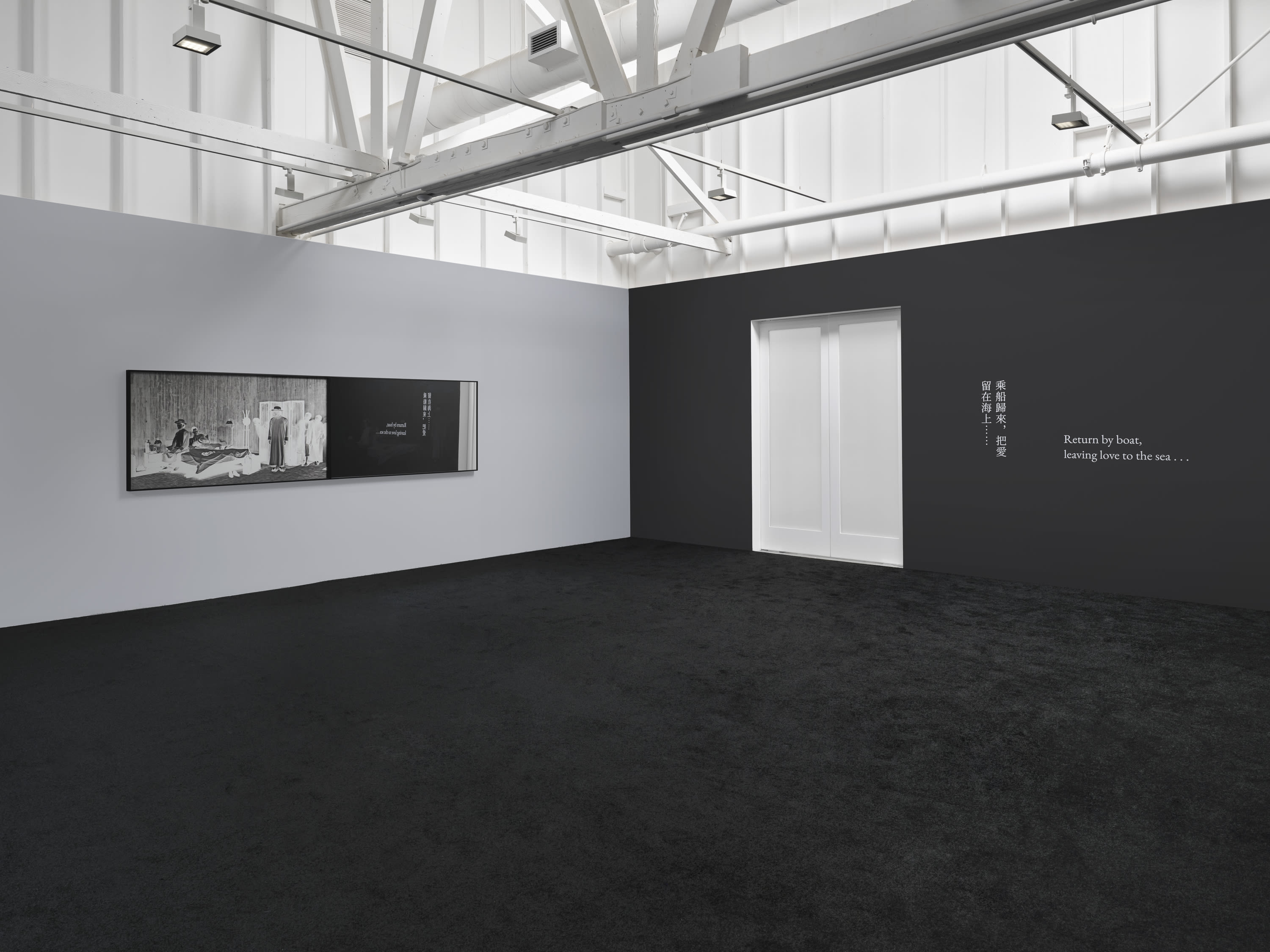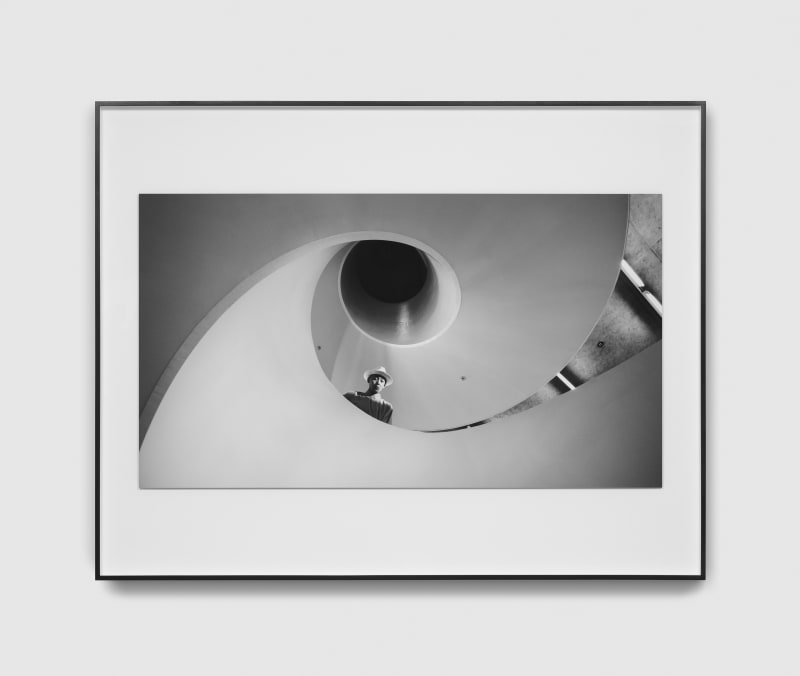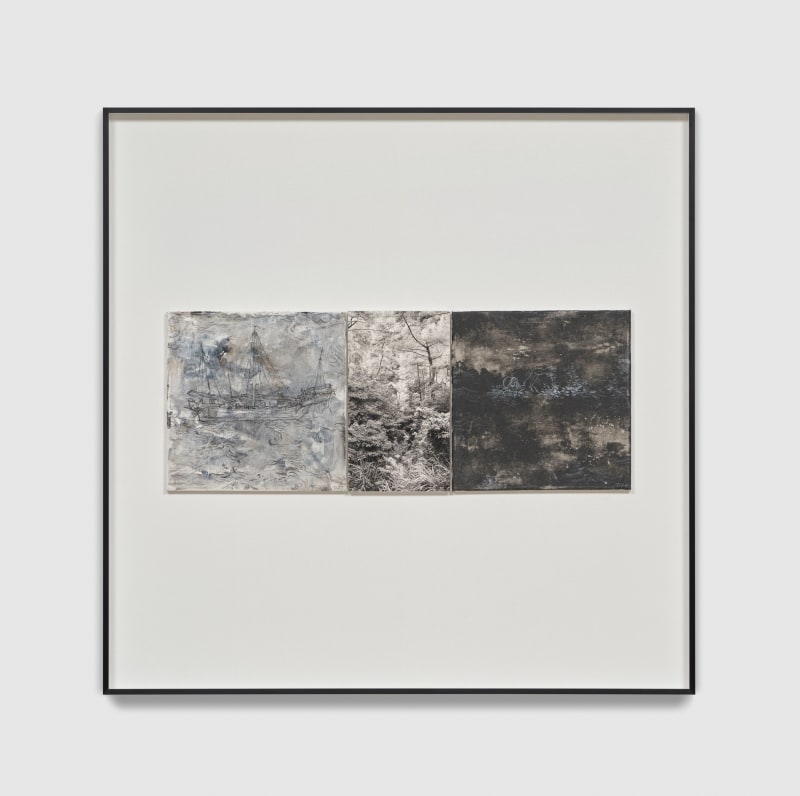Yang Fudong: Sparrow on the Sea
Yang Fudong
Sparrow on the Sea
1120 Seward Street Los Angeles
21 May – 26 July 2025
Marian Goodman Gallery is pleased to present Sparrow on the Sea, featuring the eponymous new film by Yang Fudong, one of the most important Chinese artists working today. Yang opens the exhibition with a series of photographic film stills that provide us with glimpses of what is to come. In addition to the photographs, Yang presents two new series of mixed media and photographic works, Sparrow and Island, that enrich the overarching investigations of light, time, and memory present in Sparrow on the Sea. Please join us for a walkthrough of the exhibition led by Hamza Walker, Director of The Brick, on Wednesday, 21 May, at 7 pm. In 2004, Walker had the pleasure of working with Yang on the exhibition Yang Fudong: 5 Films at The Renaissance Society where Walker served as Associate Curator and Director of Education.
Sparrow on the Sea was commissioned in 2024 by the M+ Museum and Art Basel for the museum’s monumental LED façade in Hong Kong overlooking Victoria Harbour. This large-scale film was presented without audio to embrace the ambient noise of the city—the sounds of the sea, the hum of car engines, and the patter of human voices—as a collaborative soundtrack, which led the artist to describe it as a site-specific ‘architectural film.’ In the context of this exhibition, the film is projected as a cinematic installation, accompanied by an original full soundtrack as well as select exchanges of dialogue. Yang’s visual language for the work, which he considers to be a short poem, draws from Hong Kong cityscapes and cinema, but also from a few of his own films, including his early work, An Estranged Paradise (1997).
Over the course of an hour, Sparrow on the Sea chronicles a fever dream portrait of an enigmatic protagonist who is played by three separate characters representing various periods of his life. The narrative of the character is an expressionistic stream-of-consciousness—to the viewer, he is at once young and old, light and dark, negative and positive, traveling non-sequentially between years, scenes, and places, often accompanied by a large, vintage, and mysteriously leaking suitcase.
Outlining the film’s narrative structure, Yang states, “[a]t the beginning of the film, a middle-aged man picks up the suitcase and prepares to depart. This opening scene conveys the youthful desire to leave and pursue a beautiful life. In the decades that follow, he quietly comes and goes. Coupled with the film’s everyday details, his journey represents a kind of cyclical reincarnation. Time flows slowly, as we experience different life moments. The film therefore attempts to weave together time and memory, re-assembling the confused and ambiguous episodes into a vivid journal of life.” An intentional maze of uncertainty, the film hints at things that Yang never resolves, creating an open-ended space for the viewer to interpret the story based on their own life experiences.
Shot in black and white in present day Hong Kong, the film evokes an aesthetic from another era. This furthers the uncanny sense of atemporality that his main character, often intertwined with another actor depicting a version of the protagonist within the same scene, purports throughout the film. A deliberate hallucination, we find ourselves confusing smoke for clouds, day for night, and experiencing a déjà vu of repeating spiral forms, all while the protagonist, with his suitcase in hand, is seen against settings that complement his seemingly perpetual state of transition: stairs, ramps, trams, cars, hotel rooms, and hallways.
At several points in the film, the narrative temporarily suspends, cutting to a short sequence observing an open water swimmer within a boundless, dark ocean. Yang has said that the title of the film was inspired by his vision of a sparrow longing for and eventually finding the courage to take flight across the sea. Towards the end of Sparrow on the Sea, we find an octopus escaping from a suitcase and slithering onto the beach. After the surreal journey of the octopus, the viewer is left wondering if it will return to the ocean. Yang describes this sense of ambiguity, as imbued throughout the film, as the most accurate way to articulate feeling: “as in many poems, [ambiguity] is a beautiful form of expression and a way to reach the most beautiful imagination.”
Also on view in the Main Gallery, Sparrow (2025), a new series of mixed media, is shown along walls adjacent to the film. Encompassing painting, photography, and drawing, these triptychs, each bearing the name of a month, unveil the passage of time through scenes of nature and historical narrative. “It is as if a sparrow flies over the sea, time leaves traces, year after year, day after day. Everything waits for unexpected encounters. Perhaps time is a continuous, unfinished history and a collection of everyday memories,” says Yang of the works. Nearby, the Island series (2025) includes diptychs based on stills from the film, represented here as both positive and negative photographs. Similar to inverted scenes in Sparrow on the Sea, this change encourages us to see previously hidden or obscured forms, creating a deeper picture of what was always there.
Yang’s Seven Intellectuals in the Bamboo Forest (2003-2007) is now on view through 10 August at the Asia Society Museum in New York, a film in five parts that was also recently featured at the Arsenal - Institut für Film und Videokunst in Berlin (2024) and premiered in full at the 52nd Venice Biennale in 2007 to great acclaim. The Asia Society hosted the North American premiere of Sparrow on the Sea on Sunday, 11 May 2025, which was followed by a conversation with the artist, moderated by Kelly Ma, Curator, Learning & Outreach, Asia Society Museum.
Yang Fudong was born in Beijing in 1971 and currently lives and works in Shanghai. Since the late 1990s Yang has developed a significant body of work mainly in film, installation and photography. Yang’s visual language has always been enveloped in a dream-like mystery. His characters, often silent and disembodied, usually move according to choreographed gestures, transport viewers into an aesthetically perfect environment, and are deliberately suspended in time.
A self-titled solo exhibition of Yang’s work will be shown at UCCA, Beijing, China from November 2025 – February 2026. His work has been exhibited widely and internationally with solo presentations in major institutions that include Asia Society Museum in New York (2025); M+ Museum in Hong Kong (2024); Zena Zezza, Oregon, U.S.A (2021); Fosun Foundation, Shanghai (2019); the Long Museum West Bund, Shanghai (2018); Savannah College of Art and Design, Georgia (2018); Espace Louis Vuitton, Tokyo, Japan (2017); Daegu Art Museum, Daegu, Korea (2016); Fondation Louis Vuitton, Paris (2016); Yuz Museum, Shanghai (2015); Auckland Art Gallery, New Zealand (2015); ACMI, Melbourne, Australia (2014); Parasol Unit, London (2011); National Museum of Contemporary Art, Athens (2010); Asia Society, New York (2009); Kunsthalle Wien, Vienna (2005); Castello di Rivoli, Torino (2005); and Renaissance Society, Chicago (2004). In 2013, Kunsthalle Zurich and Berkeley Art Museum & Pacific Film Archive co-organized his retrospective exhibition. The artist has also participated in prestigious international art events including the Diriyah Contemporary Art Biennale in Saudi Arabia (2024), Sharjah Biennial, UAE (2013); Venice Biennale, Italy (2003 and 2007); The Asia Pacific Triennial of Contemporary Art, Australia (2006); and Documenta XI, Germany (2002).
Press Contact
Linda Pellegrini, Head of Communications and Events
linda@mariangoodman.com, +1 (212) 977 7160


















